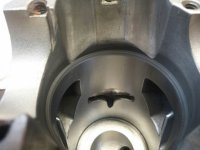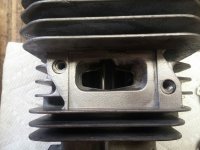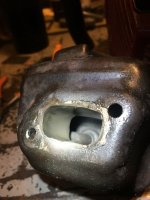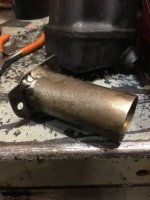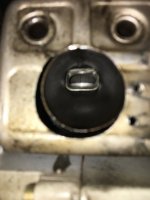First, I'm seriously impressed by all the knowledge and ideas being shared for 14 whole pages in such a civilized manner. Scary!
Second, I've not done any port work aside from cleaning carbon out of an exhaust port. Then I recently rebuilt a Mac PM8200 with the infamous 'Q' port. Not only is the exhaust port around 30% smaller than the intake port, it screamed to be widened with at least the parts of the roof on each side of the arch being cleaned out somewhat (if nothing else) since there is a distinct dividing ridge between each side (top and bottom) of what otherwise is a slightly rounded port exit from the inside out..., in other words, not at all flat. It sure seemed like even some minimal grinding could make a huge difference for the better by opening things up a bit. I asked a couple of the Mac gurus what they thought about it and came away with a basic understanding that the design is somehow associated with varying/dynamic compression characteristics between low and high RPM's relative to load, etc., and I should leave well enough alone and let the transfer design take care of any concerns I may have about the exhaust port design. Who was I to argue? One of the guys mentioned he thought Randy may have weighed in on the subject somewhere along the line but couldn't remember specifics.
Based on the subject and extent of this thread, (not to mention the participants), it seemed like a good place to float this out for opinions and observations..., or for anyone who has actually ported one of the 82cc Mac 'Q' port saws.
Still has me scratchin' my head.







